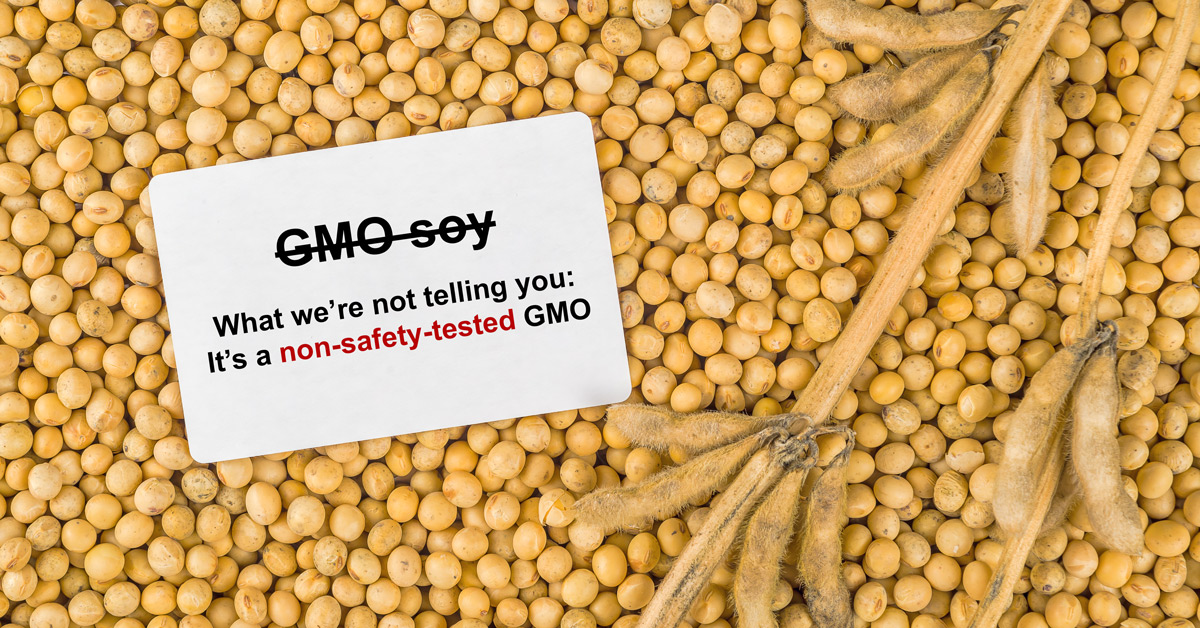
CTNBio considers a gene-edited GMO variety to be non-GMO, making research processes "less bureaucratic"
Brazil's National Technical Commission for Biosafety (CTNBio) has decided that a CRISPR gene-edited soybean, developed by Embrapa for drought tolerance, is non-GMO* – thereby exempting it from the GMO regulations and meaning it will not carry a GMO label.
"By considering this soybean as non-GMO, the research processes are less bureaucratic and therefore we were able to reduce the time and costs for drought-tolerant cultivars to reach the market, with guaranteed biosafety," said Alexandre Nepomuceno, general head of Embrapa Soja, and researcher Liliane Henning.
"Furthermore, there will be no need for us to conduct the complex process of commercial deregulation of a GMO product, which is time-consuming and costly," they said.
CTNBio's decision was based on the regulation for gene editing techniques in Brazil, Normative Resolution No. 16 (RN16), in response to a request from Embrapa Soja (Soybean Research Centre).
The researchers identified genes associated with drought tolerance in the Active Germplasm Bank, a seed collection with more than 65,000 soybean accessions (different types of soybean).
Said Nepomuceno, "These tolerance sources do not necessarily have the high yield and health characteristics of the commercial cultivars. Therefore, the research team's strategy was to use a highly productive cultivar and alter its DNA – via a gene editing technique – to produce trait that aims to reduce productivity losses when droughts occur."
In Embrapa Soja's greenhouses, which are controlled environments, the gene-edited plant was said to be more tolerant to drought than the other control plants with which it was compared. However, field tests still need to be conducted. With this CTNBio approval, Embrapa plans to test the gene-edited plant in different soy producing regions.
As thousands of GM plants have been tested successfully in greenhouse or even field trials, only to fail to make it to market or to fail after authorisation in farmers' fields, GMWatch is sceptical about whether this gene-edited soybean will make it to the commercialisation stage.
Little information is publicly available about the mechanism by which the gene editing was able to confer the supposedly drought-tolerant trait, but Nepomuneco said back in 2017 that he was seeking to deactivate genes involved in the metabolism of ethylene, a plant hormone that interferes in the mechanisms of increased tolerance to drought: "Ethylene gas is involved in the maturation of soybeans and, when we interfere with this metabolism, we can extend the time that the plant supports periods of drought".
In GMWatch's view, if the newly approved soybean utilises this mechanism, we might expect to see problems with maturation in the plant.
GM not needed
We also think that resilient drought tolerance could be conferred by cross-breeding the naturally drought-tolerant soybeans available in the Active Germplasm Bank together with high performing varieties. As genetic modification is known to reduce the yield of soybeans, these high performing varieties used for the cross-breeding would be non-GM. In fact, non-GM varieties of drought-tolerant soybeans have already been developed.
Cross-breeding utilises whole gene families that work together in networks to create sustainable desirable traits, whereas gene editing can only manipulate one or a few genes at a time, meaning that the claimed drought tolerance may not prove durable in farmers' fields.
The deregulation of the GM soy means that no safety testing will have been performed on it, meaning it could contain novel toxins or allergens.
Doubtless the researchers and Embrapa didn't want to go down the cross-breeding route because the result would likely not be patentable. GMOs are far easier to patent.
Finally, resilient drought tolerance is achieved not primarily through genetics but by building healthy soil with lots of organic matter, which holds moisture and enables plants to survive drought conditions, as well as preventing runoff and flooding in times of too much rain.
Another gene-edited soybean approval without safety testing
In September 2022, CTNBio approved Embrapa's soybean gene-edited with CRISPR to deactivate some antinutritional factors (lectin). “The lectin, when present in poultry and swine feeds, hinders the absorption of nutrients, hence the importance of inactivating it”, said researcher Liliane Henning.
This soybean is genetically engineered to have an altered composition, but due to the assumption that it is non-GMO, it will not have been tested for unexpected changes to its composition that could make it toxic or allergenic.
* In Brazil they translate “genetically modified” as “transgenic” (“transgênico”). Because some GMOs are not intended to be transgenic (in that they are not intended to incorporate foreign DNA) but they are still GMOs, we have translated the Brazilian Portuguese “não transgênica” (“not transgenic”) as “non-GMO”.










